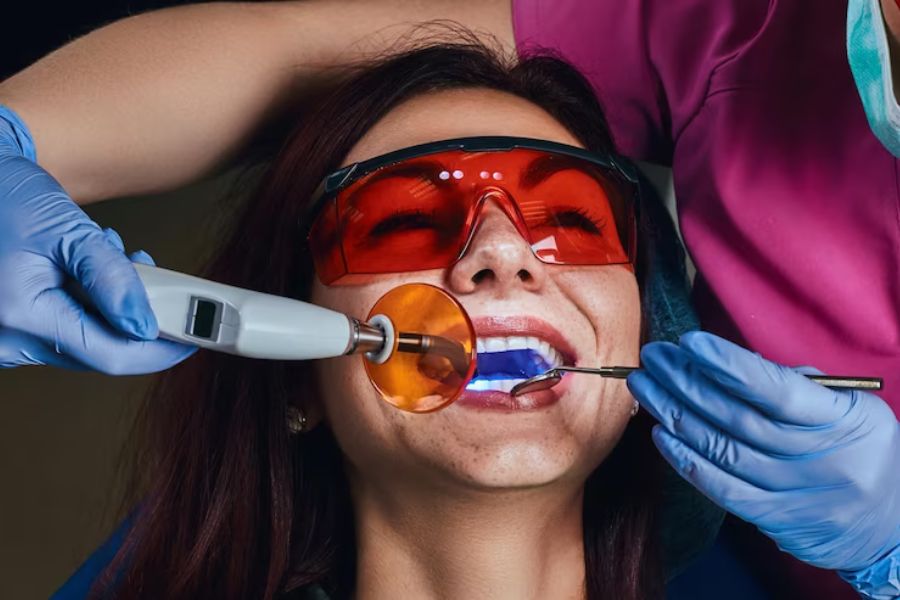Teeth whitening gels are clear, peroxide-based gels applied with a small brush directly to the surface of your teeth. They usually need to be applied twice a day for 14 days. The results are visible within a few days and last for about four months. According to the American Dental Association (ADA), whitening gels can effectively lighten teeth but require consistency and careful application.
Whitening strips are thin, nearly invisible strips coated with a peroxide-based whitening gel. These are applied to the teeth for 30 minutes twice daily for 14 days. Similar to gels, results can be seen in a few days and last for approximately four months. The ADA suggests that strips provide a convenient and cost-effective way to whiten teeth, though they may not whiten all teeth evenly, especially if they’re crooked.
Whitening rinses are one of the newest types of teeth whitening products. Like most mouthwashes, they freshen breath and help reduce dental plaque and gum disease. Plus, these rinses also include ingredients like hydrogen peroxide that whiten teeth. Users must swish it in their mouth for 60 seconds twice a day before brushing their teeth. It may take up to 12 weeks to see results with this method. According to Colgate, while whitening rinses are convenient, they might not be as effective as other methods since the whitening agents are only in contact with the teeth for a short time.
Whitening trays involve filling a mouth guard-like tray with a gel whitening solution that contains a peroxide-bleaching agent. The tray is then worn for a period of time, generally from a couple of hours a day to every night for up to four weeks or longer. While this method can provide significant results, Crest notes that improperly fitting trays can irritate the gum and soft tissue, highlighting the importance of finding a well-fitting product or seeking professional treatment.
Conclusion
Teeth whitening treatments like gels, strips, rinses, and trays can all contribute to a brighter smile. The best option will depend on an individual’s teeth, budget, and personal preferences. It’s always recommended to discuss with a dentist before starting any new teeth whitening procedure, to ensure it’s suitable for your oral health.

